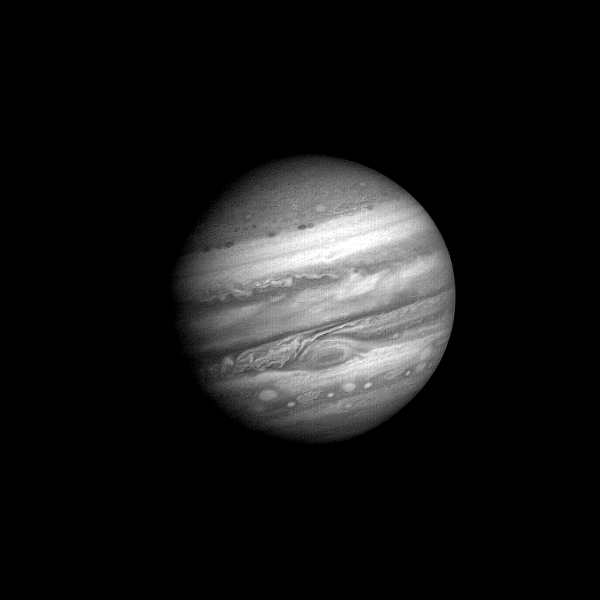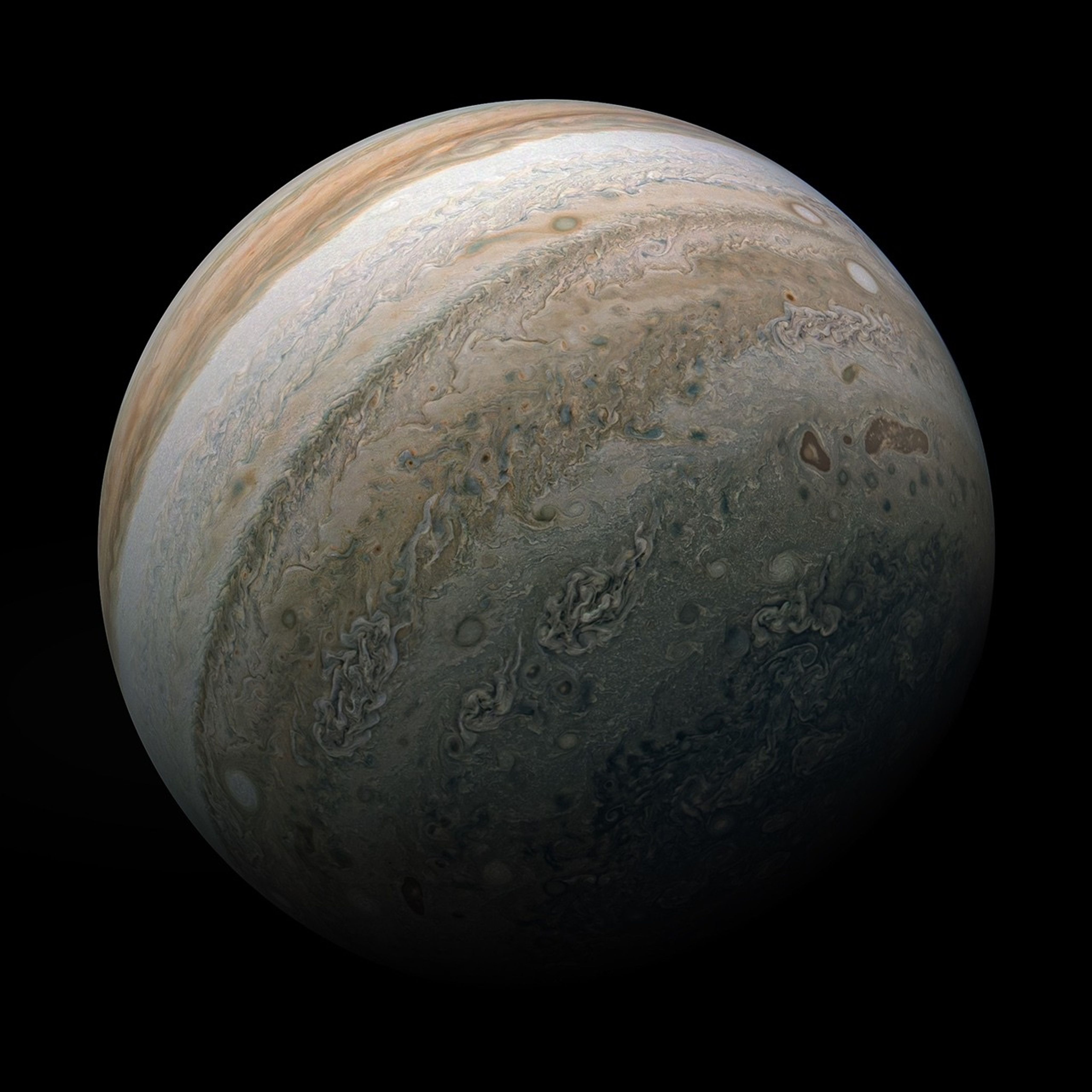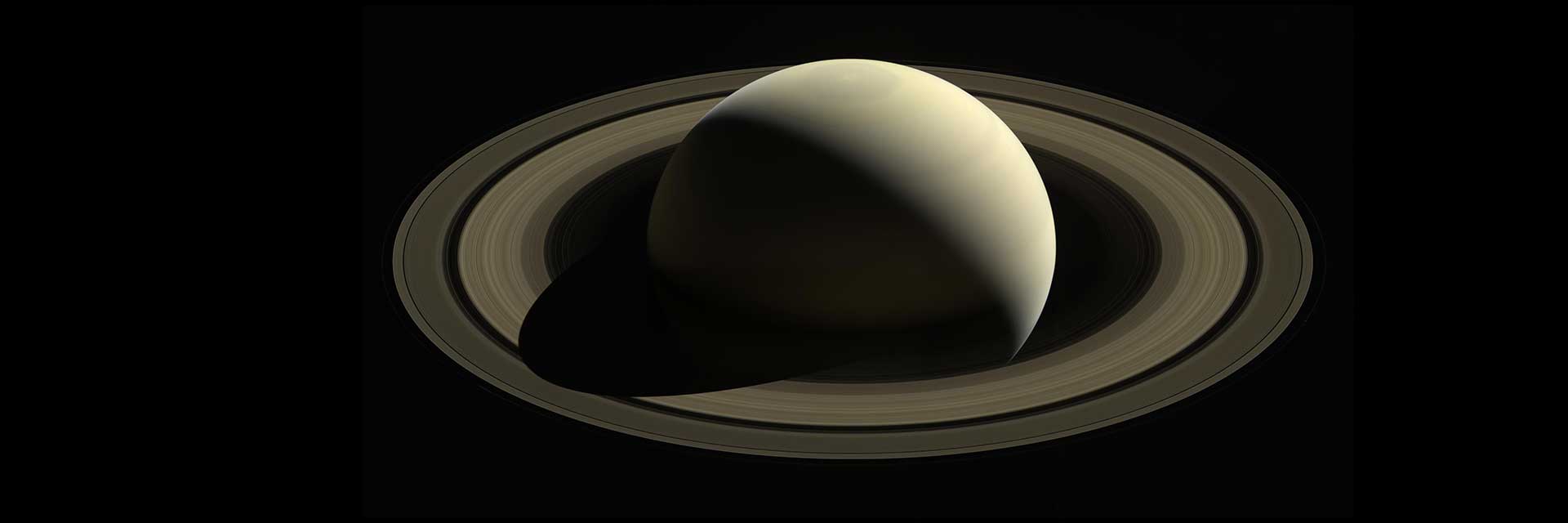Voyager 1
The most distant human-made object

What is Voyager 1?
Voyager 1 has been exploring our solar system since 1977. The probe is now in interstellar space, the region outside the heliopause, or the bubble of energetic particles and magnetic fields from the Sun. Voyager 1 was launched after Voyager 2, but because of a faster route it exited the asteroid belt earlier than its twin, and it overtook Voyager 2 on Dec. 15, 1977.
- Voyager 1 discovered a thin ring around Jupiter and two new Jovian moons: Thebe and Metis.
- At Saturn, Voyager 1 found five new moons and a new ring called the G-ring.
- Voyager 1 was the first spacecraft to cross the heliosphere, the boundary where the influences from outside our solar system are stronger than those from our Sun.
- Voyager 1 is the first human-made object to venture into interstellar space.
In Depth: Voyager 1
Nation | United States of America (USA) |
Objective(s) | Jupiter Flyby, Saturn Flyby |
Spacecraft | Voyager 1 |
Spacecraft Mass | 1,592 pounds (721.9 kilograms) |
Spacecraft Power | 3 Multi-Hundred Watt Radioisotope Thermoelectric Generators (MHW-RTGs) stacked in a series on a boom, producing about 158 We each, at launch. |
Mission Design and Management | NASA / JPL |
Launch Vehicle | Titan IIIE-Centaur (TC-6 / Titan no. 23E-6 / Centaur D-1T) |
Launch Date and Time | Sept. 5, 1977 / 12:56:01 UT |
Key Dates | March 5, 1979: Jupiter flyby Nov. 12, 1980: Saturn flyby Feb.17, 1998: Became the most distant human-made object after overtaking NASA's Pioneer 10 Jan. 1, 1990: Voyager Interstellar Mission (VIM) officially began Aug. 16, 2006: 100 astronomical units reached August 2012: Voyager 1 enters interstellar space |
Launch Site | Cape Canaveral, Florida / Launch Complex 41 |
Scientific Instruments | 1. Imaging Science System (ISS) 2. Ultraviolet Spectrometer (UVS) 3. Infrared Interferometer Spectrometer (IRIS) 4. Planetary Radio Astronomy Experiment (PRA) 5. Photopolarimeter (PPS) 6. Triaxial Fluxgate Magnetometer (MAG) 7. Plasma Spectrometer (PLS) 8. Low-Energy Charged Particles Experiment (LECP) 9. Plasma Waves Experiment (PWS) 10. Cosmic Ray Telescope (CRS) 11. Radio Science System (RSS) |
In Depth
Voyager 1 launched after Voyager 2, but because of a faster route it exited the solar system earlier than its twin. Voyager 1 overtook Voyager 2 on Dec. 15, 1977.
Voyager 1 began studying Jupiter in April 1978 at a range of 165 million miles (265 million km). Images showed Jupiter’s atmosphere to be more turbulent than during the Pioneer 10 and 11 flybys. Voyager 1 took a picture every 96 seconds to create a timelapse movie of the approach.

In early 1979, Voyager 1 discovered a faint ring system around Jupiter. The spacecraft’s closest encounter with Jupiter was at 12:05 UT on March 5, 1979 at a range of 174,000 miles (280,000 km), It went on to encounter several of Jupiter’s moons, including Amalthea, Io, Europa, Ganymede, and Callisto. Spectacular close-up photos of the moons opened up completely new worlds for planetary scientists. The spacecraft discovered two new moons, Thebe and Metis.
Its flyby of the Saturn system in November 1979 was as spectacular as the Jupiter encounter. Voyager 1 found five new moons, a new ring, and complicated ring structures, including “shepherd moons” that keep some rings well-defined. The spacecraft photographed Saturn’s moons Titan, Mimas, Enceladus, Tethys, Dione, and Rhea. All the moons appeared to be composed largely of water ice.
Images of Titan showed a thick atmosphere that completely hid the surface. The spacecraft found that the Titan’s atmosphere was composed of 90% nitrogen. Nitrogen, methane, and more complex hydrocarbons indicated prebiotic chemical reactions might be possible on Titan.
Voyager 1’s closest approach to Saturn was at 23:46 UT on Nov. 12, 1980 at a range of about 78,000 miles (126,000 km).
After Saturn, Voyager 1 headed north out of the ecliptic plane at a speed of about 3.5 AU per year. Because of the specific requirements for the Titan flyby, the spacecraft was not directed to Uranus and Neptune.
Voyager 1’s final 64 images were a mosaic taken at a distance of 40 Astronomical Units (AU) from the Sun. This solar system family portrait included six planets (Mercury and Mars were not visible). The image of Earth inspired the “Pale Blue Dot” made famous by Voyager science team member Carl Sagan (1934-1996). These were the last of a total of 67,000 images taken by the two Voyagers.
The Voyager Interstellar Mission (VIM) began on Jan, 1, 1990. The goal was to extend exploration to the outer limits of the Sun’s sphere of influence and beyond.
- On Feb. 17, 1998, Voyager 1 became the most distant human-made object in existence when — at a distance of 69.4 AU from the Sun — it “overtook” Pioneer 10.
- On Dec. 16, 2004, Voyager 1 reached the termination shock and entered the heliosheath.
- On Aug. 25, 2012, the spacecraft became the first to exit the heliosphere and begin measuring the interstellar environment.
Voyager 1 continues to communicate with NASA’s Deep Space Network and send data back from four still-functioning instruments — the cosmic ray telescope, the low-energy charged particles experiment, the magnetometer, and the plasma waves experiment.

Each of the Voyagers contain a message to potential extraterrestrials in the form of a 30-centimeter diameter gold-plated copper disc. Like the plaques on Pioneers 10 and 11, the Voyager Golden Record has inscribed symbols that show the location of Earth relative to several pulsars. The record includes instructions to play it similar to a vinyl record player.
Audio on the disc includes greetings in 55 languages, 35 sounds from life on Earth (such as whale songs, laughter, etc.), 90 minutes of music including everything from Mozart and Bach to Chuck Berry and Blind Willie Johnson. It also includes 115 images of life on Earth and recorded greetings from then U.S. President Jimmy Carter and then-UN Secretary-General Kurt Waldheim.
As of Aug. 21, 2024, Voyager 1 was 164.7 AU from Earth — the farthest object created by humans — moving at a velocity of 38,026.79 mph (17.0 km/second) relative to the Sun.
Adapted from Asif A. Saddiqi’s “Beyond Earth: A Chronicle of Deep Space Exploration,” NASA History Office, 2018.











